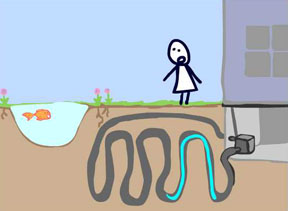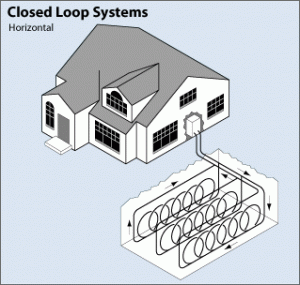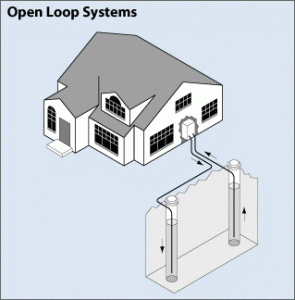How it works

Geothermal heat pumps take advantage of the relatively constant temperature of the earth a few feet below the surface and use it as a medium for heat exchange. Geothermal heat pumps can both heat and cool. They typically function by running a fluid through pipes set in the ground. During the summer, the fluid loses heat to the earth, returns to a heat pump which draws heat from the building and gives it to the fluid, which in turn loses that heat to the earth, yielding a net cooling. In the winter, the loop works in reverse. The fluid runs through the heat pump which removes heat from the fluid and releases it in to the building. The fluid then circulates through the pipes and gains heat from the earth.The main energy cost of a geothermal heat pump is electricity to circulate the fluid and run the heat exchanger. The EPA states that a properly sized and installed geothermal heat pump can save consumers 30 – 40% on heating and cooling bills. Source
Geoexchange, the Geothermal Heat Pump Consortium, states that geothermal heat pumps on average are 48% more efficient than gas furnaces and 75% more efficient than oil furnaces. Source
Types of Systems:

Closed Loop System:
Pipes are buried in trenches at least four feet deep, and a fluid (either water or an antifreeze mix) is circulated through the pipes and back to the heat pump inside the building. The pipes can either be horizontal or vertical. Horizontal closed loop systems are the most common system for new residences, especially where sufficient land is available. Vertical loop systems are more common for school and commercial buildings where the large amount of space necessary for horizontal systems is not available.

Open System:
Uses ground or well water directly as the fluid that circulates through the heat pump inside the building. One the water has circulated through the pump, it is returned to the ground through the well, a discharge well, or the surface. This type of system is only practical where there is an abundant source of water, and all local regulations and codes relating to groundwater discharge allow such a system.